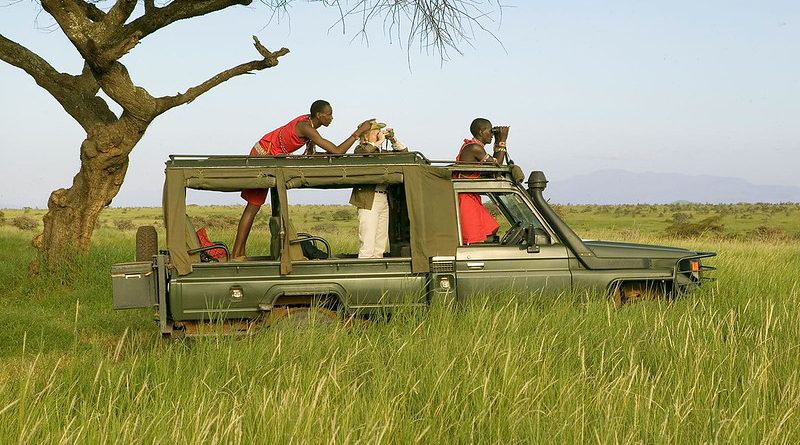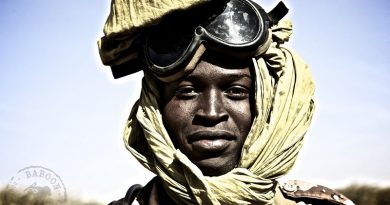Africa’s Great Migration: Everything You Need To Know
If you’re the adventurous type who loves nothing more than ticking off an ever-expanding list of bucket-list ventures, well, how does watching one of nature’s most spectacular shows on earth sound? Then Africa’s Great Migration is the once-in-a-lifetime experience you’ve been looking for.
The annual wildebeest migration is the ultimate way to do a wildlife safari. Imagine: thousands of thundering hooves, from various animals, running across the vast plain of East Africa in order to ensure the survival of the species. This spectacular odyssey is an iconic African experience, where travellers get a front row seat to witness a unique cycle of life.
Witnessing the great migration requires careful planning in order to get the most of it. The good news is that you’ve landed in the right spot.
What Is It?
The wildebeest migration is considered the greatest show on earth and with good reason. Every year, two million wildebeest and approximately twenty thousand other animal species migrate from the Serengeti to the Masai Mara in search of water and fresh grazing grounds.
The migration covers over 3000 kilometres and follows the patterns of the African rains, which generally moves in a clockwise direction, making tracking almost impossible. This is why going on a guided safari and using herd-tracking apps makes the experience much less stressful to plan.
Where and When Can You See It?
Although many people believe that the migration happens only once a year, it is, in fact, an all year journey with each month showcasing a different species and experience. So, even if you see the migration when it isn’t following the “usual” pattern, the odds are that you will most likely spot a plethora of zebras and gazelles while on safari. The wildebeest, however, follow the rain. So, seasonal planning is a must if you want to witness this particular species migrate across the country.
Although their route is often thought of as a set circuit, it is important to remember that this is a completely natural process that you’ll see based on a preset map. It depends entirely on factors such as weather, environmental and predatory aspects, and of course, the animals themselves.
While it is risky to rely on past maps alone, they give you a migration route that has become the norm. This usually starts at the southernmost part of the Serengeti, between Ndutu and Ngorongoro, and moves through the Western Corridor up to Kenya’s Masai Mara and back to the starting point of the Loliondo area.
December through to April is a popular time to visit due to the fact that the wildebeest mostly stay put for calving season, just southeast of Serengeti National Park. The reason it is so popular? Well, during this time, more than 500,000 baby wildebeest are born within just a two-week window, which means that travellers have an extremely high chance of seeing predators hunt.
After calving season (in May and June), the heard usually makes their way out of the drying Serengeti lands and follow the rains through the Western Corridor and the Grumeti River.
The period between July and November is another extremely popular time to visit as hordes of wildebeest sprint toward Masai Mara and cross the river. This is perhaps the most nail-biting part of the journey. Thousands of newborn and fully grown wildebeest leap into crocodile infested waters and dangerous rapids in order to get to the greener grass on the other side.
Between late October and the end of November, the heard starts making their way back and begin the perilous journey all over again.
How To See It
Although it is possible to plan this adventure on your own, a trip like this is exceptionally difficult to plan for someone who does not have much knowledge of the region or the animals. So, instead of spending the time leading up to your trip in a state of stress and panic, it is definitely recommended to go on a guided wildebeest safari which is tailored made to this exact kind of experience.
Thankfully, there is a range of options to choose from that can suit your exact travel needs. From a quick three-day escape to budget safaris, family safaris and even luxury getaways for those that don’t want to get too immersed in Africa’s wilder side.
This way, you can enjoy all the anticipation leading up to your African safari and rest easy knowing that your accommodation, itinerary and, depending on the package you choose, meals could already be sorted out.
What To Pack
Now that you know what it is, when to go and how to see it, you’re probably wondering what you should pack for your great migration adventure. This would vary greatly depending on the length of time you’re planning to spend on safari, as well as other factors such the time of year you plan to travel and whether or not you’re traveling with the kids.
To get the most out of the migration, it is recommended to spend a minimum of a week in your chosen region. This time will not only allow you to settle into the new environment but will also give you a good enough time to see the action without feeling jet-lagged and exhausted from travel.
While in the midst of packing, it can be easy to forget a few essential items that can enhance your experience tenfold. So here is just a quick list of things to make sure you include when getting ready to experience the great wildebeest migration:
- Sun screen and lip balm – Remember that, even though you’re chasing the rain, the African sun is harsh and being sunburned while on safari can really dampen the experience.
- Binoculars – You might have 20 – 20 vision, but you probably won’t be close enough to see all the small exciting moments.
- A camera – This is a more obvious one. If you happen to spot a lion stalking its prey, this is a moment you’re definitely going to want to remember.
- A soft backpack – This is essential for storing all of your personal items. You want something that is lightweight and takes up minimal space as safari vehicles may have limited capacity for luggage.
- Something warm to wear – One of the most common misconceptions is that when you’re traveling to Africa, it will always be hot. Sure, it is pretty hot and there are days where temperatures can reach up to 40 degrees Celsius. But, in nature, there is always balance. The hotter days can often transform into icy nights, so it is important to pack a light jersey/jumper with you.
Remember this: If you don’t have it with you, then you have to learn to do without it. So, make sure that you make a packing list far in advance and start collecting your essentials ahead of your journey.
Watch the video below for more info:
More Information
Book All Safaris
The world’s leading safari travel site.




